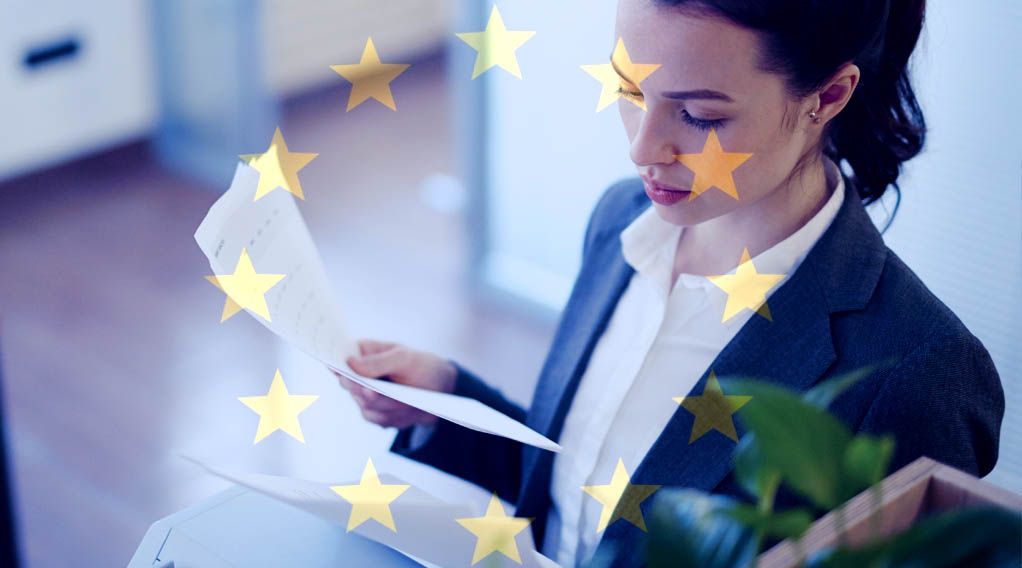EU and EEA customs regulations – what you need to know

Crossing European borders is very simple. As a citizen of the EU, you don’t have to undergo control on land border or even hold a passport. All you need is a personal ID. This matter looks slightly different in the case of air transport clearance or carrying larger quantities of goods. What are the EU and EEA customs regulations and what documents should you hold at the border?
EU customs regulations covering products for personal use
When travelling across countries of the EU, you usually carry items for your own use. Generally, there are no limitations as regard individuals. There are exceptions for some product groups, such as tobacco and alcohol products. In such cases, each country has separate provisions. The specified threshold cannot be lower than the EU guidelines.
What are the permitted quantities of alcohol and cigarettes that you can bring into an EU country?
Each EU member can define its own limits for alcohol and tobacco products but they cannot be lower than:
- 800 pieces of cigarettes;
- 400 pieces of cigarillos (cigars weighing no more than 3 grams each);
- 200 pieces of cigars;
- 1 kg of tobacco;
- 10 litres of spirit products;
- 20 litres of alcoholic wines;
- 90 litres of wine (including maximum of 60 litres of sparkling wine);
- 110 litres of beer.
Customs officers may, however, assume that the products you carry are not intended for your own use. It is your responsibility to prove that you don’t transport them for commercial purposes. This is why it is worth carrying documents confirming the intended use, especially when transporting large quantities of products. If you are unable to convince customs officers, they will have the right to apply a customs fee or even detain the products.
Transport of cash in the EU
Most people travel with debit and credit cards nowadays. This is particularly because a lot of banks no longer charge commission on cashless payments made in other members states. If you still want to travel with cash, you have to keep in mind one key issue. When you intend to travel with banknotes and coins with the value exceeding EUR 10 thousand, you should notify this fact to the customs office of each country to or through which you plan to travel. Such an obligation results mainly from the fact that some EU countries may require cash to be declared when it exceeds EUR 10 thousand. It is worth remembering that when accessing or leaving the EU territory, regulations regarding declaring the value of carried cash are the same. If you don’t do that, the funds may be detained at the border.
Customs regulations in the European Union – perfumes and fuel
Limitations regarding some goods also apply to perfumes. You will not have to pay duty as long as the value of such goods does not exceed EUR 300 per person in the case of land-based travel. If you’re travelling by airplane or ship, this limit is EUR 430 per person. Some countries have a lower limit of EUR 150 with regard to people below 15.
When you travel by car, you can carry a certain amount of fuel. This should not exceed 10 litres in a small tank. Of course, the above limitation does not include the fuel in your car’s tank. If you exceed this limit, each surplus shall be subject to customs duty. What is more, the above rule applies to all motor vehicles, so trucks and motorcycles are included as well.
EU customs regulations when entering from a non-EEC country.
Separate regulations regard access or departure from EU territory as well as some EU zones, such as Canary Islands. This specifically relates to carrying alcohol or tobacco products. Lower limits apply in such a case, which are as follows:
- Cigarettes – 200 pieces (or 40 pieces with lower limits);
- Cigarillos – 100 pieces (or 20 pieces with lower limits);
- Cigars – 50 pieces (or 10 pieces with lower limits);
- Tobacco – 250 g (or 50 g with lower limits);
- Spirit-based beverages or pure ethyl alcohol – 1 litre;
- Non-sparkling wine – 4 litres;
- Beer – 16 litres;
- Alcoholic or sparkling wine – 2 litres.
Keep in mind that the above goods can be combined as long as their total quantity does not exceed the general limit. For example: you can carry 100 pieces of cigarettes and 25 pieces of cigars which, when separate, constitute half of the limit. In such a case you cannot carry anything else unless you pay excise and customs duty.
Some European countries may apply lower limits for tobacco products. Each country applies different rules. For instance: Poland, Bulgaria, Greece, Lithuania, Latvia, Slovakia and Hungary apply lower limits for people travelling by land or sea. Other countries such as Estonia and Italy, apply lower limits for all travellers incoming from non-EU members states.
Customs and excise duty when carrying goods outside the EU
When travelling to a country that is not an EU member, you can purchase duty-free and excise-free goods on the territory of the Community. They are available in special duty-free zones. You have to be aware of the fact that bringing such products onto the territory of a country that is not an EU member may generate the obligation of paying customs and excise duty. This is why you should contact the customs authority in the country of your destination prior to your flight. The above will allow you to avoid any unpleasant surprises during customs clearance.
Customs regulations in Norway, Iceland and Switzerland
Other customs provisions apply in countries belonging to the European Economic Area (Norway, Iceland and Liechtenstein), and Switzerland. It is worth keeping in mind that not all those countries are covered with a common customs policy applicable in the EU and for this reason other principles of carrying goods for personal use apply.
Customs regulations in Liechtenstein
Liechtenstein is a part of the common European market and there are no special customs provisions that are different from those applicable in EU member states, Pets are covered by certain limitations if you want to transport them. When you travel with a dog or cat you will need the following documents: valid rabies vaccination certificate, appropriate marking in the form of a micro-chip as well as a filled-out European passport of a dog or cat.
Customs regulations in Norway
Norway has introduced a simplification of procedures for every traveller, who has to undergo customs clearance at the border. You will have two gates to choose from: green and red. The green gate is for people who declare goods that are not subject to customs duty, and do not require a permit for transport. If you go through the red gate, it means that you carry goods that require customs duty or are subject to other taxes, as well as a special permit for being brought onto the territory of Norway.
Generally, goods that are not subject to customs clearance must meet the following two conditions:
- They are intended for personal use and not for sale.
- Such objects should be in you carry-on luggage so that you can take them out at any moment and present them to the customs officer during control.
How much alcohol can be brought onto the territory of Norway?
Alcohol and tobacco products can be transported without any fees as long as certain limits are not exceeded. They are as follows:
- 1 litre of spirit-based beverage from 22% to 60%;
- 1.5 litre of wine from 2.5% to 22%;
- 2 litres of beer from 2.5% and stronger, ready drinks or cider (from 2.5% to 4.7%);
- 200 pieces of cigarettes;
- 200 pieces of rolling paper;
- 250 g of other tobacco products.
The above goods can be transported if you are at least 18 years old. In the case of spirit-based beverages with alcohol content exceeding 22%, the age limit is 20.
Customs regulations for agricultural products applicable in Norway
Separate provisions apply to transport of agricultural and meat products. First of all, you can carry no more than 10 kg of meat, cheese or pet food. Exceptions include the fact that transport of such goods originating from non-EEA is fully forbidden.
You have to be aware that transport of agricultural products requires strict rules to be followed. Detailed information is provided by the Norwegian Food Safety Authority (Mattilsynet). There is a group of products that you can carry with you without the need for meeting the phytosanitary conditions. They are as follows:
- 10 kilograms of fruit, berries and vegetables except for potatoes;
- 25 pieces of cut flowers;
- 3 kilograms of flower seeds and bulbs;
- 5 pieces of pot plants (household plants) originating from European countries;
- 50 packets of portioned seeds.
Customs regulations in Iceland
Different customs regulations apply in Iceland. This country is not fully covered by the customs union so for this reason the procedures at the border are slightly different than in other EU countries. Besides personal belongings required for the duration of travel, you can also carry:
- Food (up to 3 kg with the purchase value not exceeding ISK 25,000 (approx. USD 200) except for raw food products);
- Alcoholic beverages in the following combinations:
- 1 litre of liquor with alcohol content above 21% and 0.75 litres of wine as well as 3 litres of beer, or
- 1 litre of liquor with alcohol content above 21% and 6 litres of beer, or
- 1.5 litres of wine and 12 litres of beer, or
- 3 litres of wine and 6 litres of beer, or
- 18 litres of beer.
- 200 pieces of cigarettes or 250 g of other tobacco products.
Alcoholic beverages can only be carried by people who are at least 20 years old. In the case of tobacco products, the age limit is lower, i.e. 18 years old.
Limitations regarding personal products in Iceland
There are some limitations regarding certain types of personal products. You can carry only one telephone or other communication device per person through the border. When you travel to Iceland for fishing purposes, you have to disinfect your fishing equipment prior to your arrival and hold documents confirming the above. When travelling with a dog, cat or other pet, you will need a permit issued by the Iceland Sanitary and Epidemiological Authority (MAST), which will require quarantine. You can also carry medicine sufficient for 100 days. The above is permitted on condition of presenting an appropriate medical certificate.
Customs regulations in Switzerland
When crossing the border with Switzerland, you will need to follow the applicable customs regulations. The key aspect is the fact that all personal items are free from customs and excise duty. This applies specifically to such items as: clothes, underwear, cosmetics, sports equipment, photo and video cameras, mobile phones, laptops, musical instruments and other devices for general use. Keep in mind, however, that the value of such items cannot exceed CHF 300 per person.
You can also carry non-alcoholic beverages and food that will be sufficient for a one-day stay in Switzerland. Only meat is covered by a limit which amounts to 1 kg per person, per day. Venison is the only exception, which has to undergo additional tests.
Tobacco products are subject to certain limits. You can carry them with you as long as you are 17 years old, in the amount not exceeding 250 grams of tobacco, cigarettes, cigars or others. Similar limits apply with regard to alcohol. When you cross the Swiss border, you can carry 5 litres of alcohol maximum, with less than 18% of alcohol content and only 1 litre of beverages with alcohol content exceeding 18%.
What documents may be required at the border?
With European citizenship, you can travel to Schengen countries freely. A standard personal ID recognised by all EU member states will be sufficient. Optionally, you can hold a passport that will also enable to confirm your identity.
The situation is slightly different when you decide to travel by plane and wish to carry medicines. This applies especially to prescription drugs. Customs officers in an EU country may request you to present documents that will confirm the use of specific medicines. A certificate from a physician will be one of such documents. It’s also a good idea to carry the original leaflet to avoid any doubts as to the purpose of medicines. If you are subjected to control, the entire procedure can be faster when you hold a translation of medical documentation.
EU and EEA customs regulations – what else do you need to know?
Travelling across Europe is very simple for European citizens. First of all, many formal aspects are no longer in force when crossing the border. In practice, being familiar with EU customs provisions will be required specifically when travelling by plane.
It is a good idea to remember about limits of alcohol and tobacco products as well as principles regarding transport of pets, agricultural products and medicines. Ensuring a proper translation, for instance of your medical documents, will make it easier to undergo customs clearance. Especially that in some cases, customs officers can request you to undergo detailed control without reason.
Other articles:
What are business models and what are the types?
The 7 Most Important Languages for Business
Do you need a certified translation? We will take care of it!
Marketing translation as the key to success of the fashion industry. Cooperation with a popular fashion brand
We cooperated with many customers on a daily basis. They include local companies, international enterprises and well-known brands. What are the similarities between all of them? Everyone expects high-quality translations that will help in business development. Additionally, professional translations affect their image, contribute to the opinions of recipients and are the decisive factor when it […]
Hemingway Editor and other tools for text proofing and translation
Typically, content writers first note down the message they wish to put across to their audience. Then, they re-read and edit the text. This way, they can achieve better readability, understanding and structure, and at the same time they can correct any errors in the content. It is a complex process, but fortunately there are […]
Translation of advertising slogans – how not to fall into the language trap?
Advertising translation involves the process of transferring advertising messages from one market to another. The advertising discourse is created in a language that is not only a communication tool, but also an expression of culture. This makes ad translation a highly accuracy-demanding activity. Translating slogans requires both a cultural and linguistic connection. Adapting a brand […]
TOP 8 languages for e-commerce purposes. Sourcing customers around the world
Do you manage an e-shop and want to source customers abroad to increase profit? Translations will be the basis for reaching foreign recipients with your offer. You need to start speaking their language and adjust product or service descriptions to the country where you intend to sell them. You’re probably wondering which languages to start […]



